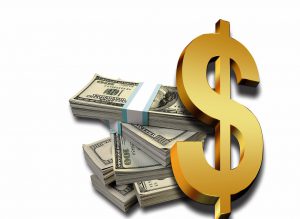We’re all about equality in this country, right? We even have a whole holiday to celebrate the noble idea that “all men are created equal,” as laid out in the Declaration of Independence. But there are still so many little things (and yes, big things, too) that can make us feel like it’s just the men that are created equal around here. And while it might not be the most important thing, the fact that women have been paying more for products for a very long time – a phenomenon known as “the pink tax” – is one of those things.
Sure, a few extra bucks here and there might seem like a small thing, but these little upcharges can add up. Not only that, but the fact that women are treated this way can be frustrating at best, and part of the reason women can feel like the perpetual and unequal “other” at worst. So what is this pink tax? What are women paying more for? And is there any way to avoid the pink tax?
What Is the Pink Tax?

You know what most women would like freedom from? Their periods. But adding insult to injury is the fact that, unless they are using a form of birth control that causes them to have fewer or no periods, they have to buy some sort of product or products to keep things under control. And shockingly, period-related products are still taxed in 30 out of 50 states, despite calls to ban this practice at the federal level, and despite the fact that most other necessities are not taxed.
But if you’re thinking that period products are the only thing that women have to shell out extra money for, you’re sadly mistaken – and the tax on tampons is not even the actual pink tax, it’s just the tip of the iceberg. The pink tax actually refers to the price difference between any product marketed to women and comparable gender-neutral products or products for men.
These products might or might not be wrapped in pretty pink packaging, but that doesn’t make the pill any easier to swallow. So, not only do women make, on average, only 82 cents for every dollar men make (and that’s if those women are white, statistics are even more dire for women of color), many companies also expect them to pay more for products like:
- Body washes
- Razors
- Lotions
- Deodorants
- Anything packaged in “feminine” packaging: for example, in 2012, Bic marketed a two-pack of pink and purple “Bic For Her” pens for $5.60, while selling a four-pack of the exact same pens in black and blue colors for $3.37.
And this is not just us grumbling while we stroll down the aisles of our local drugstore. This is a problem that has been recognized by The Joint Economic Committee of the United States Senate (JEC), who wrote an entire report on the implications of the Pink Tax in 2016. They found that there was absolutely a markup on personal care products: in fact, the markup in that category alone was 13%! And in addition to these markups, they also found that manufacturers also markup toys, clothing, and senior care items. Overall, 42% of women’s products cost more, while only 18% of men’s products are more expensive. And guess what? You’re not imagining things if you think that you’re being upcharged for certain services: pricing differences were also observed in service-based industries such as auto repair.
The pink tax can be obvious, like in the example of the Bic pens: sometimes companies simply markup items that are marketed towards women. In other cases, it’s a little bit sneakier: companies will offer a package of items marketed towards women for the same price as a more neutral package or a package marketed towards men, but the package will contain less of the product. So women will end up paying the same as men, but getting less.
So why are all of these markups a big deal? Not only is it insulting to women, but it also means that they can end up paying more than $1,300 more than men on products every year.
Why Do We Have a Pink Tax?
The tempting answer to why there’s a pink tax is: the patriarchy. And, ok, that might be true, but we’ll have to smash that another day. There are actually a few reasons why women are charged more for certain items, however unjustifiable they might seem. For example, women are charged more for products marketed to them because:
- Tariffs on women’s clothing tend to be higher than those on men’s clothing: about 15.1% compared to 12.9%, respectively, and that difference is passed on to consumers.
- The concept of price differentiation dictates that the product which is considered the “standard” is produced at a higher volume than more “specialty” products, like the pink alternatives for women. As a result, pink women’s razors, for example, cost more to make, and that cost is once again passed on to consumers.
- Price fixing is a problem. Price fixing means that lack of competitiveness in the market allows large companies to dictate the price of goods and services, since they prevent companies that would potentially drive down the cost of products and services from entering the market.
- Price discrimination is also an issue. Companies price products differently (less) for people who they want to entice to buy – they assume they’ve got a lock on women, so they charge them more because they think they will buy anyway. “I think that if the consumer is willing to pay more for a certain color, then it’s in manufacturers’ and marketers’ best interest to charge more,” said Christine Whelan, a professor of consumer science at the University of Wisconsin Madison and director of the university’s MORE (Money, Relationships, and Equality) program. “But I do mind that people don’t know about this.”
We mind, too, and we think you should know about it, so you can make the best decisions for you. But is there any way to avoid the pink tax?
Avoiding the Pink Tax
The pink tax is so ingrained in the way that companies sell, and the way that we buy, that it can be hard to completely avoid it. But there are some things you can do to reduce its impact, like:
- Buy products that are gender-neutral, or marketed to men – This might be tougher if you’re married to a certain scent of deodorant or lotion; otherwise, don’t hesitate to sniff around. In addition, we urge you to try men’s razors: even the ones marketed as “one-time use” will tend to last longer as razors for leg skin than as razors for delicate facial skin. Just be careful: you’ll have to do the math to see how much you’re getting for the price when you choose between men’s/gender-neutral products and women’s products.
- Buy clothes that don’t require dry cleaning – Some states have tried to outlaw service providers like hair salons and dry cleaners charging more for women customers, but in most cases, you’re going to pay more for these kinds of things.

- Buy used clothing – You can help the environment and avoid those silly tariffs and upcharges for women’s more “complicated” clothing.
- Look into companies that are anti-pink tax – Some companies, like Billie (which sells women’s razors), Boxed (an online retailer that sells items in bulk), and Brandless (which sells its own products to reduce markups) are committed to creating and selling products to women at a fair price, and they’re worth a look.
- Buy gender-neutral items for girls when possible – Sometimes you just can’t get away from the unicorns, but you might be able to persuade the littles to go for a red scooter or helmet, for example, instead of a pink one, which could save you some money.
- Try reusable period products – There are some great options on the market nowadays, like cups, reusable pads, and even period underwear. Think of all the money you could save on that monthly expense!
Finally, you need to speak up! Call out the companies who you see marking up items marketed towards women, and complain to the highest-up person you can reach. That means calling their corporate office, not just speaking to a customer service rep. And don’t stop there: shame them on social media, and tell your friends as well as your local consumer protection agency. According to Whelan, “The more people we can get to say, ‘No, I’m not going to pay extra for these products,’ then the companies won’t make them — or they won’t charge extra,” Whelan said. “This is about supply and demand.”
In addition, don’t forget to advocate with your local government officials for banning the tampon tax – nobody should have to pay more for such a necessary product!
We’ve got a lot to fight for, but don’t get tired, and don’t think that little things like the pink tax aren’t worth your time. It all adds up and it all makes a difference in women’s lives!
